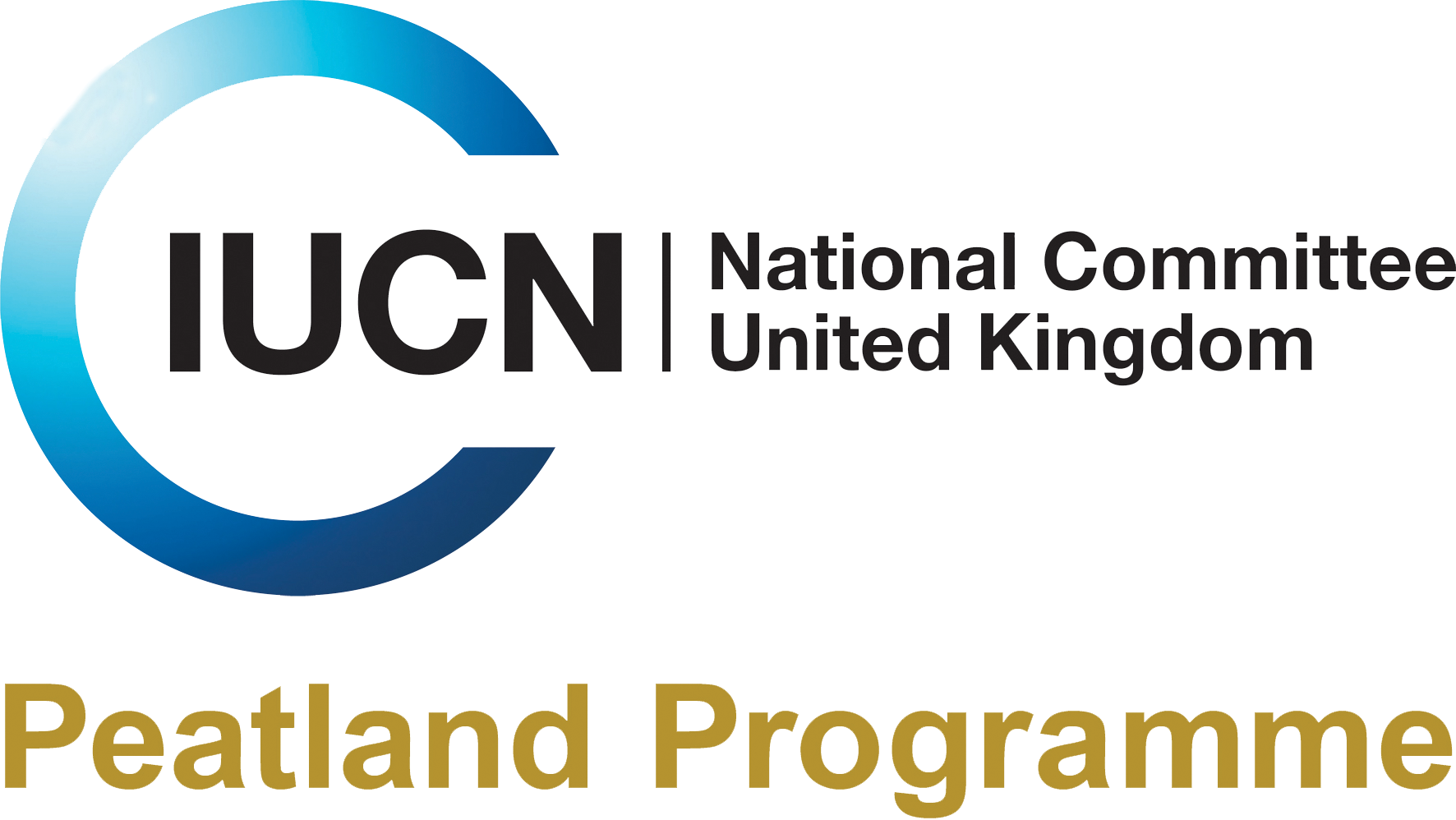Peatlands are some of the most beautiful landscapes in the UK, providing inspiration, solace and joy for millions of people. A growing body of research demonstrates that nature connectedness is beneficial to our cognition, social skills and physical and mental health1. This is particularly important during difficult life events. According to the Mental Health Foundation, visiting green spaces helped 45% of people in the UK to cope with the stress caused by the COVID-19 pandemic2. Psychological connection with nature also contributes to pro-environmental behaviours and values - we benefit from nature and, in turn, nature benefits from us.
Peatlands are deeply embedded in human culture, and the incredible preservation properties of peat provide a unique archaeological archive which details our relationship with peatlands over millennia. Despite negative connotations in popular culture and some of the language associated with peatlands, they have also provided food, fuel and homes for many people, and still do.
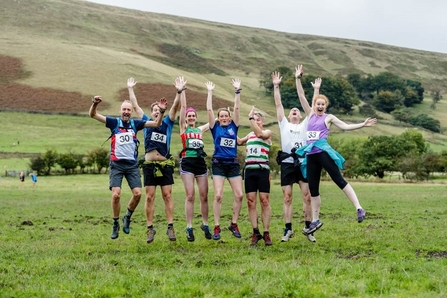
Fell runners at the Peatland Programme’s ‘BogFest’ conference. Credit Carl Whitham
Recreation
Today, peatlands provide some of the most popular areas for recreation in the UK, despite the fact that many people may not understand that they are in fact spending time within a peatland, what a peatland is, what a healthy peatland looks like, or the many benefits of peatlands for people and nature. However, peatland-dominated landscapes provide opportunities for a wide range of recreational activities such as fell running, climbing, walking, kayaking, angling, birdwatching or simply spending time in nature. Research demonstrates positive associations between nature exposure and increased levels of physical activity, as well as decreased risk of cardiovascular disease3. The health of peatlands themselves is often integral to providing the aesthetic beauty or the ecological integrity needed for these landscapes to be able to provide enjoyable recreational experiences.
Quantifying recreation on peatlands as an ecosystem service is challenging because visitors are often not aware they’re visiting peatland habitats. The Office for National Statistics attempted to quantify the recreational value of peatlands across the UK and estimated that in 2016 alone, people spent almost 179.9 million recreation hours on peatlands, spending £273.6 million4. Examples from sites across the UK, such as those in the table below, demonstrate just how many people are benefitting from peatlands in this way.
| Recreational value of UK peatlands | Estimated time spent/visitor numbers per year | Monetised value (£) per year |
|---|---|---|
| UK estimate | 179.9 million hours (2016) | £273.6 million (2016) |
| Moor House National Nature Reserve, England | 100,000 visitors | £504,000 |
| Wicken Fen National Nature Reserve, England | 70,600 paying visitors | £12,600 from car park fees |
| Forsinard Flows Nature Reserve, Scotland | 4,000 visitors | £190,000 |
| Cors Caron National Nature Reserve, Wales | 55,280 visitors | |
| Cuilcagh Mountain, Northern Ireland | 90,000 visitors (increase from 3,000 since the site was made accessible with a boardwalk) |
The Flow Country, which covers much of the Scottish counties of Caithness and Sutherland, applied in 2020 to become the world’s first peatland World Heritage Site. If successful, this will recognise the global significance of this area for its blanket bog habitat and associated biodiversity, providing opportunities for enhanced funding, eco-tourism, social capital and education. A decision is expected in July 2024.

The viewing tower at Forsinard Flows National Nature Reserve.
Engaging communities
Community engagement initiatives are a useful tool for educating a wide audience about peatlands and creating a sense of connectedness to local landscapes and empowerment in contributing to positive change. Across the UK, many organisations are using creative approaches to understand and enhance people’s connection to peatlands and the wellbeing this brings, connecting artists, academics, practitioners and local communities.
The Art and Energy Collective’s ‘Mossy Carpet’, featured in our Sphagnum species showcase, is an expanding collective artwork which encourages people to share their individual eco-actions, fostering a sense of shared impact and helping to address eco-anxiety through creative craft sessions with diverse community groups. The Crichton Carbon Centre’s ‘Peatland Connections’ project integrated arts and science to reach new audiences and deepen conversations around peatlands and their restoration. Exhibitions and events such as ‘Thin Place’ and ‘Peat Bodies’ use paintings, poetry, live performances and other creative methods to explore human connections and responses to peatlands and raise awareness of their importance.
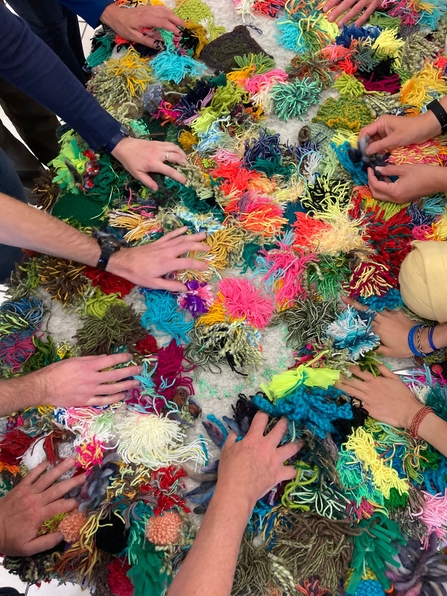
Making the Mossy Carpet out of 'Sphagnum' pompoms. Credit Art and Energy Collective
Our Eyes on the Bog methodology for simple, affordable, long-term monitoring of peatland health has been widely adopted by many peatland partnerships. It is a citizen science tool which enables volunteers to contribute to the understanding of their local peatlands and feel part of the wider scientific and practitioner community. Our Virtual Peatland Pavilions provide virtual reality experiences of peatlands around the world, supporting those who may otherwise struggle to access peatlands to experience their beauty. Research shows that even virtual engagement with nature has positive impacts on our health and wellbeing6 and can make people more environmentally connected and conscious7.
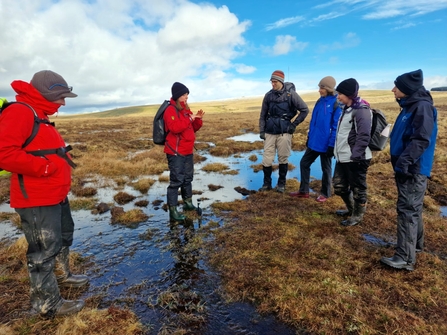
Eyes on the Bog demonstration, Dartmoor. Credit Anton Christensen
Rural economies and food provision from peatlands
Approximately 80% of UK peatlands are in a damaged state due to historic and current land management practices, and this includes many recreational areas. Most UK peatlands have been drained for economically productive activities such as agriculture, forestry, peat extraction and even recreational pursuits such as grouse shooting. These industries are an important part of rural economies and local culture and present a significant challenge for peatland restoration and sustainable management - a challenge in which impacts on local communities must be carefully considered.
Since they are so carbon-rich, lowland peat soils are extremely agriculturally productive. However, the drainage which enables crops such as sugar beet and lettuces to be grown in these soils means this type of peatland has the highest carbon emissions per unit area of any land use type in the UK. More than 40% of the UK’s vegetables are grown in lowland peat soils, with agricultural production in the East Anglian fens employing 80,000 people and generating £3 billion for the local economy5. Current drainage-based agricultural practices mean peat soils in these areas are being lost at the rate of at least 1 cm per year8 and, unless our approach changes rapidly, some of these peatlands could be lost in as little as 50 years.
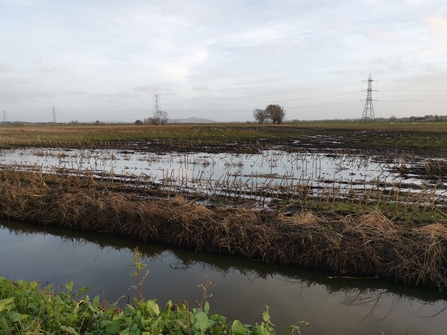
Growing traditional arable crops on peatlands requires extensive artificial drainage and results in rapid soil loss and significant carbon emissions. Credit Jane Akerman
Existing agricultural payment mechanisms, and those under development since the UK’s exit from the European Union, must provide sufficient financial or regulatory incentives for land managers to restore peatlands at scale, or transition to more sustainable forms of management. It is also important to ensure that moving away from unsustainable, intensive food production on peatlands is managed in a way which ensures unsustainable practices are not displaced to other areas. Our ‘Peatlands and Agriculture’ issues brief explores these challenges, providing recommendations for long-term financial incentives based on ecosystem service provision and sustainable practices which support and reward farmers and other land managers in adapting to new ways of managing peatlands.
People may be resistant to peatland restoration for many reasons. For example, they may not understand the damage caused to peatlands by drainage and other human impacts, or the importance of the many ecosystem services provided by healthy peatlands. They may view peatland restoration as a threat to their livelihood and way of life. Those who are closely connected to the peatland landscapes in which they live and work may not want to see the landscape changes that peatland restoration brings. For many reasons, they may prefer a drained peatland, dominated by heather and grazed by sheep, to a wet landscape which is difficult to navigate.
However, there is increasing understanding that a sustainable future for humans and the environments on which we depend requires a ‘green transition’ to economic models and policies which ensure environmental sustainability alongside economic growth and social wellbeing. Peatland restoration and sustainable management present an important opportunity for new forms of employment and income. People living in these areas must be supported to maintain livelihoods during this transition, in order to build resilient social and ecological communities9.
A green economy for people and nature
Paludiculture, or ‘wet farming’, produces crops which are naturally adapted to high water tables, reducing emissions from peatlands previously intensively drained for agriculture. Crops such as celery, reeds and bulrushes can provide food, building materials, and even clothing. Paludiculture is in its infancy in the UK, but initiatives such as England’s Paludiculture Exploration Fund are supporting projects to develop paludiculture methods, products and markets. Some paludiculture ventures are reviving industries such as reed harvesting, traditionally used to provide thatching for roofs, but now expanding into contemporary markets such as fibreboard production.
Celery can tolerate high water levels and is being trialled as a paludiculture crop. Credit Renée Kerkvliet-Hermans
An increasing number of people are employed in peatland restoration and associated activities. Digger drivers use their skills to install peat dams and reprofile erosion gullies; helicopter pilots deliver restoration materials to remote peatland sites; GIS experts and ecologists plan and assess restoration activities to ensure they are cost-effective and successful. According to data from both environmentjob and The Countryside Jobs Service, the number of paid jobs with the words ‘peat’ or ‘peatland’ in their title or description has increased significantly in recent years: environmentjob reported an increase from just 57 examples in 2020, to 226 in 2022 and 191 in 2023.
Contractor Barry Smithson in the cab of his digger used for peatland restoration. Credit Jenny Sharman
Healthy peatlands are incredible carbon stores but, when drained, they act as sources of carbon dioxide and contribute to global warming. Income can be generated from peatland restoration through the sale of carbon credits calculated according to the emissions prevented when peatlands are rewetted. The Peatland Programme’s Peatland Code provides a voluntary standard for generating carbon credits, which ensures that the ecosystem benefits marketed are real, quantifiable and permanent. Our aim is to further develop this model to include paludiculture and additional ecosystem services such as biodiversity. Within a capitalist economic system, only by recognising the full financial value of ecosystem services, will truly sustainable land use become economically viable and rewarding for people and nature.
References
-
Barragan-Jason G., Loreau M., de Mazancourt C., Singer M.C. and Parmesan C. Psychological and physical connections with nature improve both human well-being and nature conservation: A systematic review of meta-analyses. Biological Conservation. 2023; 277:109842. https://doi.org/10.1016/j.biocon.2022.109842
-
Mental Health Foundation. Nature: How connecting with nature benefits our mental health. Mental Health Foundation. 2021.
-
Jimenez M.P., DeVille N.V., Elliott E.G., Schiff J.E., Wilt G.E., Hart J.E. and James P. Associations between Nature Exposure and Health: A Review of the Evidence. Int J Environ Res Public Health. 2021; 18(9): 4790. https://doi.org/10.3390/ijerph18094790
-
Office for National Statistics. UK natural capital: peatlands. Office for National Statistics. 2019.
-
Rhymes J., Stockdale E., Napier B., Williamson J., Morton, D., Dearlove E. et al. The future of UK vegetable production – Technical Report. WWF-Tesco Partnership. 2023.
-
Chan S.H.M., Qiu L., Esposito G., Mai K.P., Tam K.P. and Cui J. Nature in virtual reality improves mood and reduces stress: evidence from young adults and senior citizens. Virtual Reality. 2023; 27: 3285–3300. https://doi.org/10.1007/s10055-021-00604-4
-
Ball, C. The effects of nature-based travel in virtual reality: the role of spatial presence and narrative engagement. Cyberpsychology, Behavior, and Social Networking. 2023; 26(9). https://doi.org/10.1089/cyber.2022.0240
-
Holman I.P. and, Kechavarzi, C. A revised estimate of peat reserves and loss in the East Anglian Fens. Cranfield University. 2011.
-
Flood K., Mahon M. and McDonagh J. Everyday resilience: Rural communities as agents of change in peatland social-ecological systems. Journal of Rural Studies. 2022; 96: 316-331. https://doi.org/10.1016/j.jrurstud.2022.11.008
